May 22, 2024 – Cape May, NJ
Difficulty: Easy
Map: Cape May Point State Park Area Map
Parking: 536 Sunset Blvd, Cape May, NJ 08204
Overview:
Officially known as Fire Control Tower No. 23, this lookout tower is New Jersey’s last remaining restorable World War II tower. It was a component of the immense Harbor Defense of the Delaware system known as Fort Miles, playing a major role in coastal defenses.

Fire Control Tower No. 23
Fort Miles was a collection of fire control towers and gun batteries, plus barracks and support buildings, on both sides of the Delaware Bay. By World War II the military used a spread-out series of towers and batteries, whose firing ranges overlapped, to protect a large territory. Its largest guns and headquarters were located on the Delaware side, in what is now Cape Henlopen State Park, since the shipping channel hugs the Southern shore of Delaware Bay.
Designed by the Army Corps of Engineers, the Tower was built here in June, 1942 (after the bombing of Pearl Harbor) by using a sliding tube-shaped form. A ring of reinforced concrete was poured. When that solidified, the form was slid up and more concrete was poured. The whole Tower was formed this way except for the top, which required a form of its own. The whole process took only 2-1/2 days. The Tower is 71 feet tall and 17 feet in diameter and consists of six levels.
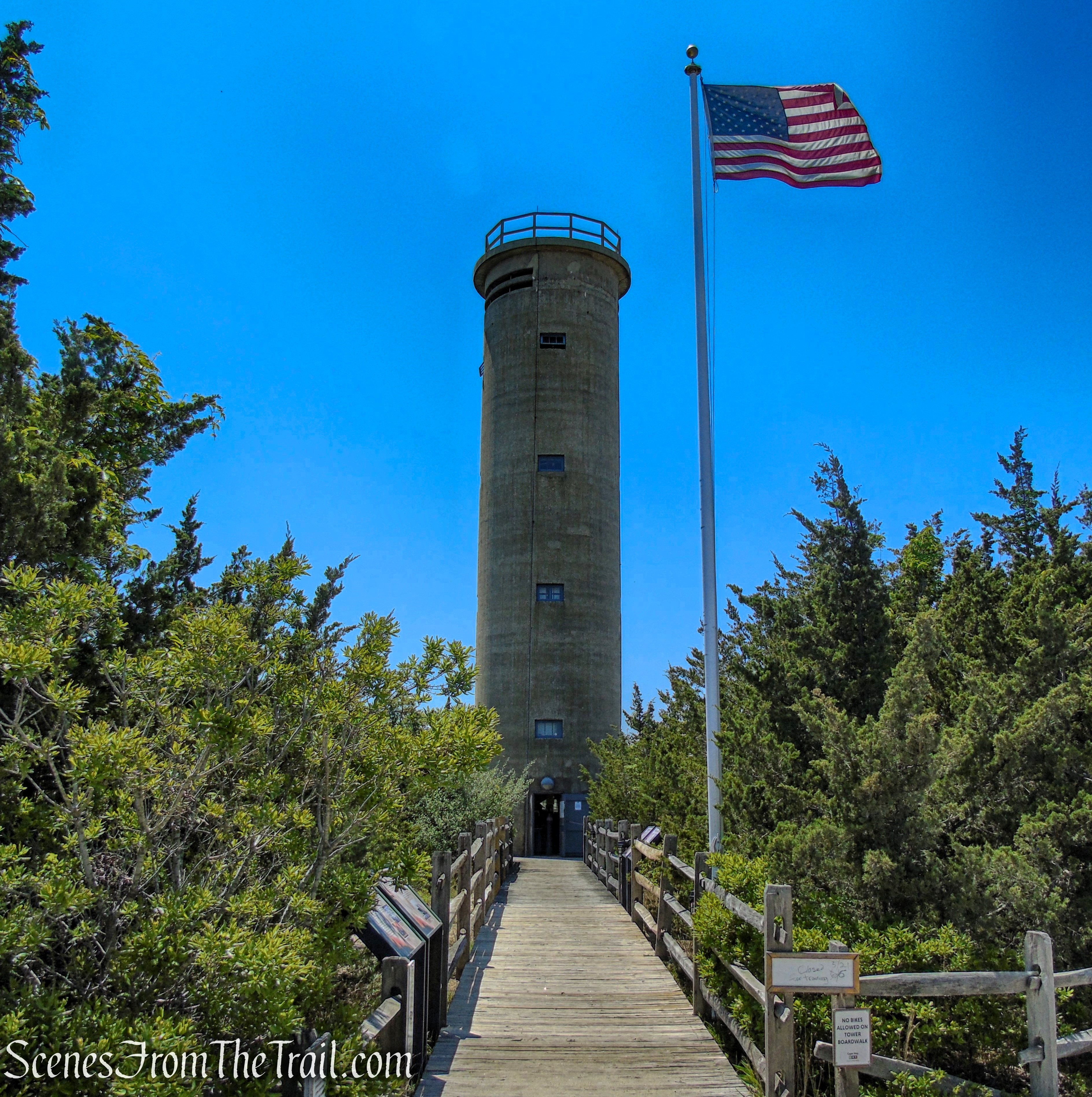
Fire Control Tower No. 23
Soldiers stationed in the tower peered through its eye-like slits, scanning the ocean and bay for German warships and submarines.
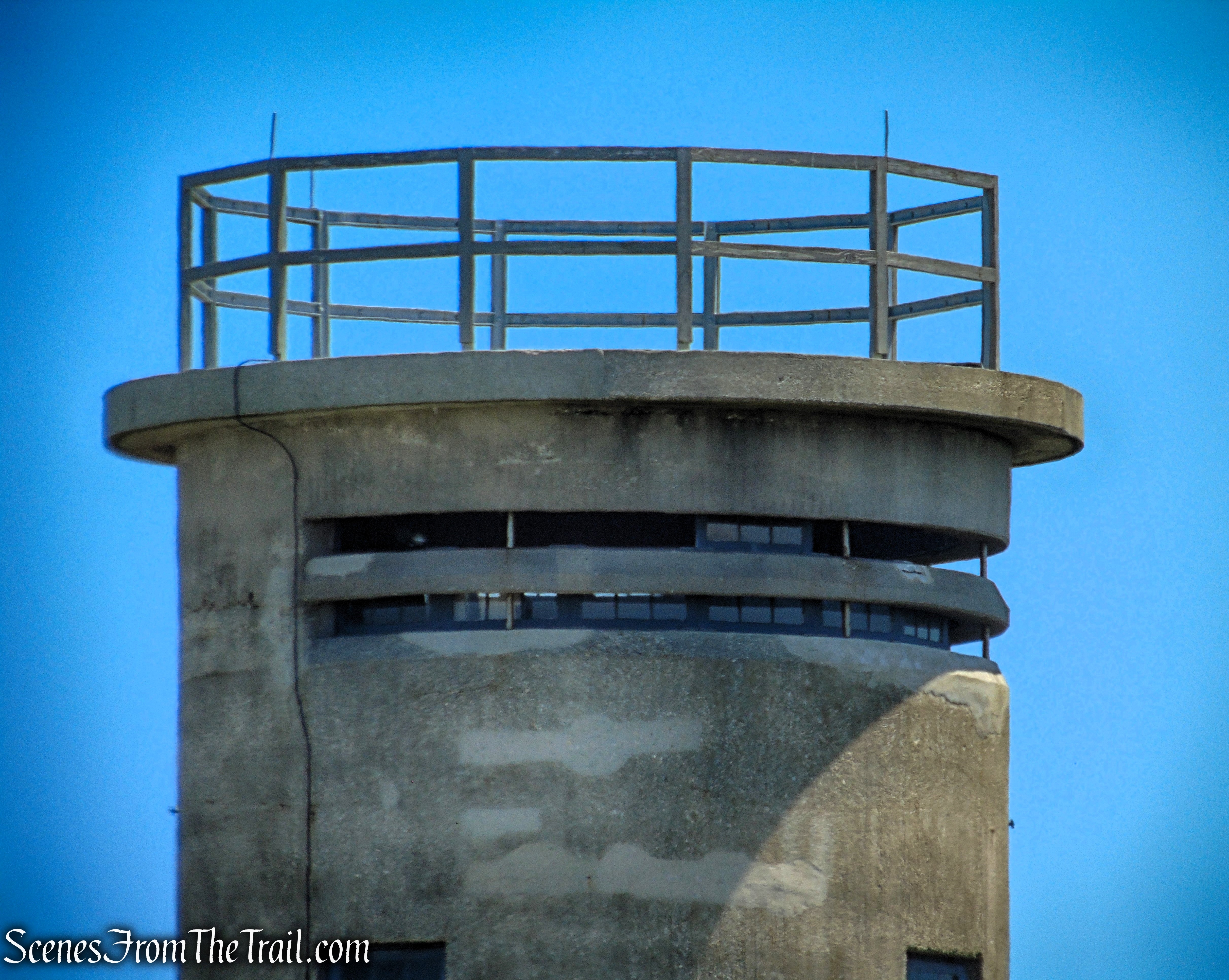
Fire Control Tower No. 23
This Azimuth instrument is a telescope-like device used by the United States to triangulate the positions of German vessels during World War II.

Azimuth instrument – Fire Control Tower No. 23
Had any been noticed, the lookouts would transmit information to the Battery 223, located along the shore at Cape May Point State Park. Battery 223’s guns were never fired at an enemy, though there were drills and live fire tests.
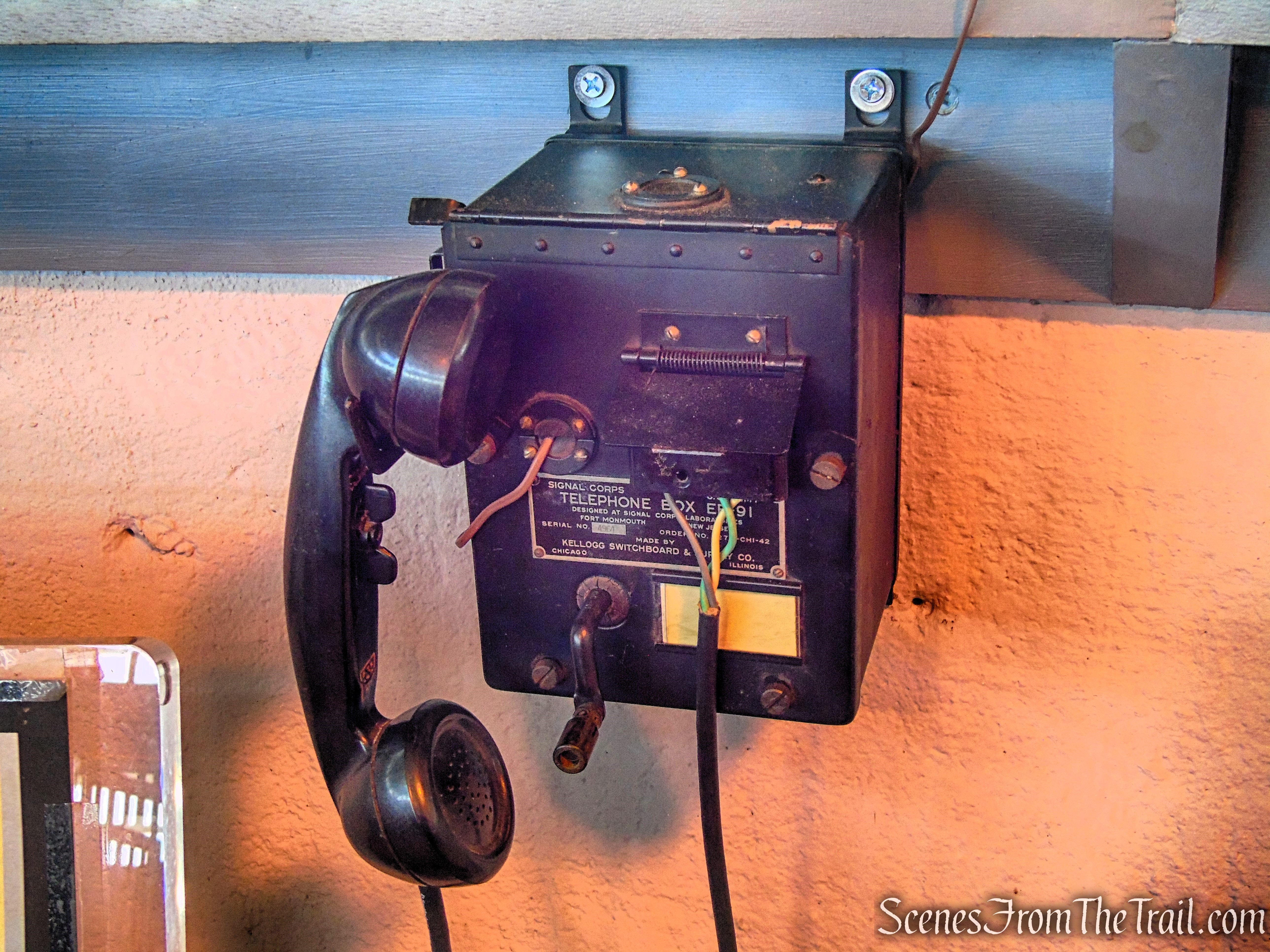
Telephone Box – Fire Control Tower No. 23
Recent History:
Like the Cape May Lighthouse, Fire Control Tower No. 23 is owned by the State of New Jersey, specifically, the Department of Environmental Protection, Division of Parks & Forestry. As was the case with the Cape May Lighthouse, the State sought to transfer administration of certain historic sites to non-profits and organizations that were in a good position to restore, maintain and operate them.
Fire Control Tower No. 23 was listed on the National Register of Historic Places on Nov. 17, 2003. In 2004, the Mid-Atlantic Center for the Arts & Humanities (MAC) — now Cape May MAC (Museums+Arts+Culture) — signed a 20-year lease for the tower after raising $1 million and receiving public grant funding. Cape May MAC restored the tower in 2008–09 and opened it to the public in April 2009.
The award-winning restoration project included: building spiral staircases in the Tower so that the public can safely climb to the top; construction of a wooden walkway from the street to the Tower, and a deck around its base, to preserve the fragile dune environment; replacing the missing windows and doors; recreating historical details, such as the original wooden ladders, and outfitting the watch room and viewing platform at the top; installing interpretive panels along the walkway and at every level in the Tower; introducing lighting and safety alarms; and upgrading the existing parking lot across Sunset Boulevard and connecting it with a cross-walk to the Tower.
The organization continues to maintain and interpret the site for members of the public.
Cape May MAC is currently raising funds to construct a visitors welcome center for the site.
Visiting the tower:
Although the World War II Lookout Tower is part of Cape May Point State Park, it’s on a separate parcel of land, located on Sunset Blvd, near Sunset Beach.
They sell shirts, hats and other souvenirs (available online also) that help support its maintenance. I purchased a nice t-shirt for $16.00.

T-shirt – World War II Lookout Tower
If you are interested in visiting this World War II Lookout Tower, please call ahead (609) 884-5404 or check their calendar to insure that they are open. Currently, admission to climb the tower is $8 for adults and $5 for children (ages 3-12). It is FREE for Active Military & Veterans.
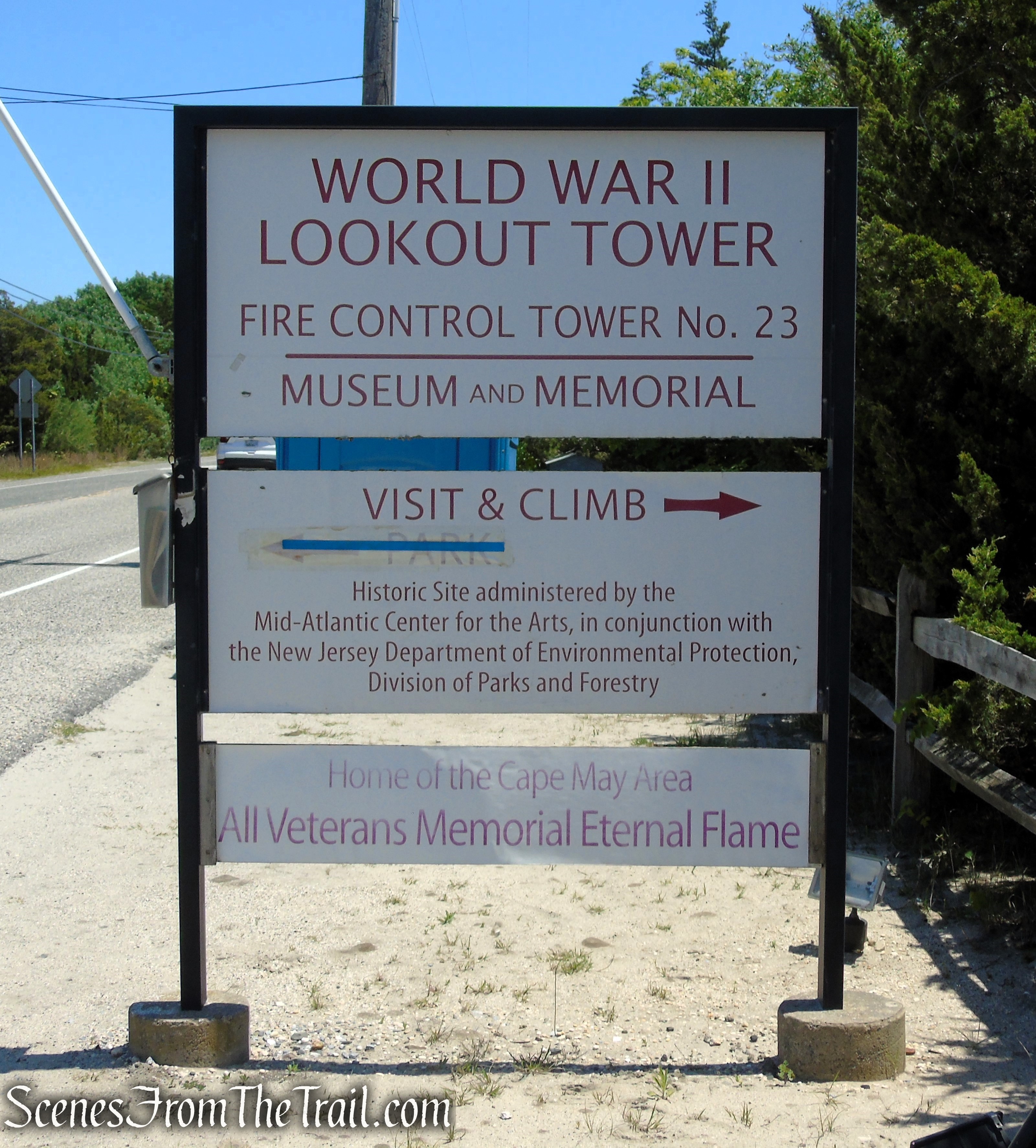
World War II Lookout Tower – Cape May Point State Park
The Tower can be reached by way of an accessible boardwalk which crosses environmentally sensitive dunes. Along the boardwalk are interpretive panels explaining the Tower’s history and role in homeland defense during World War II.

World War II Lookout Tower – Cape May Point State Park
The lower floor of the Tower is accessible and a small shop offers Tower mementos and bottled water. For those who do not climb, the staff has assembled a binder with photos and information, and can provide a wealth of information on the Tower’s history.
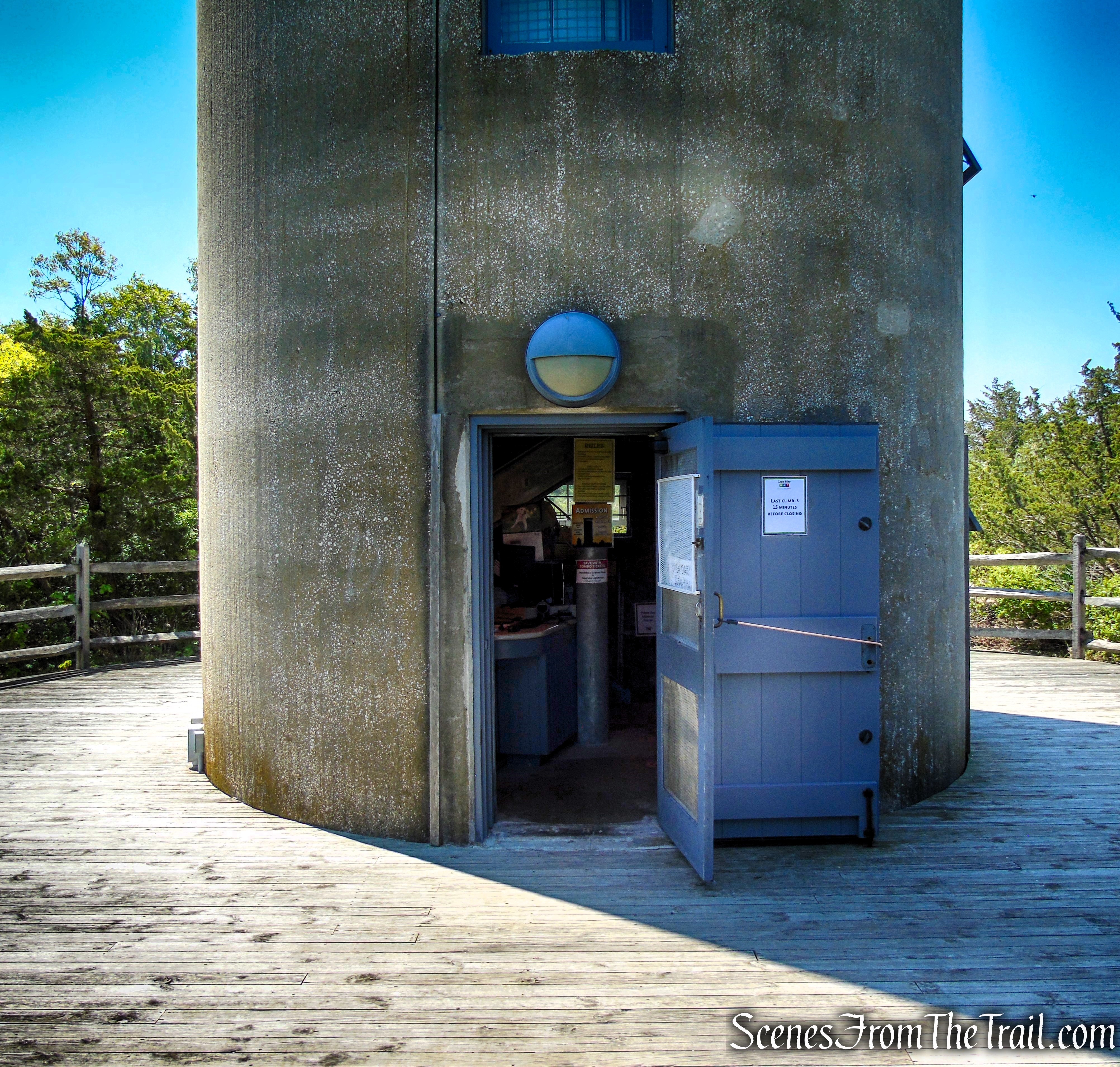
World War II Lookout Tower – Cape May Point State Park
Inside, spiral staircases wind their way to the sixth floor spotting gallery. Climb the 102 steps, where Observers will answer questions and share history about the tower.

World War II Lookout Tower
There are changing exhibits along the way to highlight varying topics of history, related to the tower. Interpretive panels and photos explain the tower’s function, while a Wall of Honor pays tribute to local residents who served during World War II.

World War II Lookout Tower
Over 160 veterans photos are on display.

World War II Lookout Tower

World War II Lookout Tower
The World War II Lookout Tower is an easy climb, with exhibits and information on different floors as you climb to the sixth floor spotting gallery.
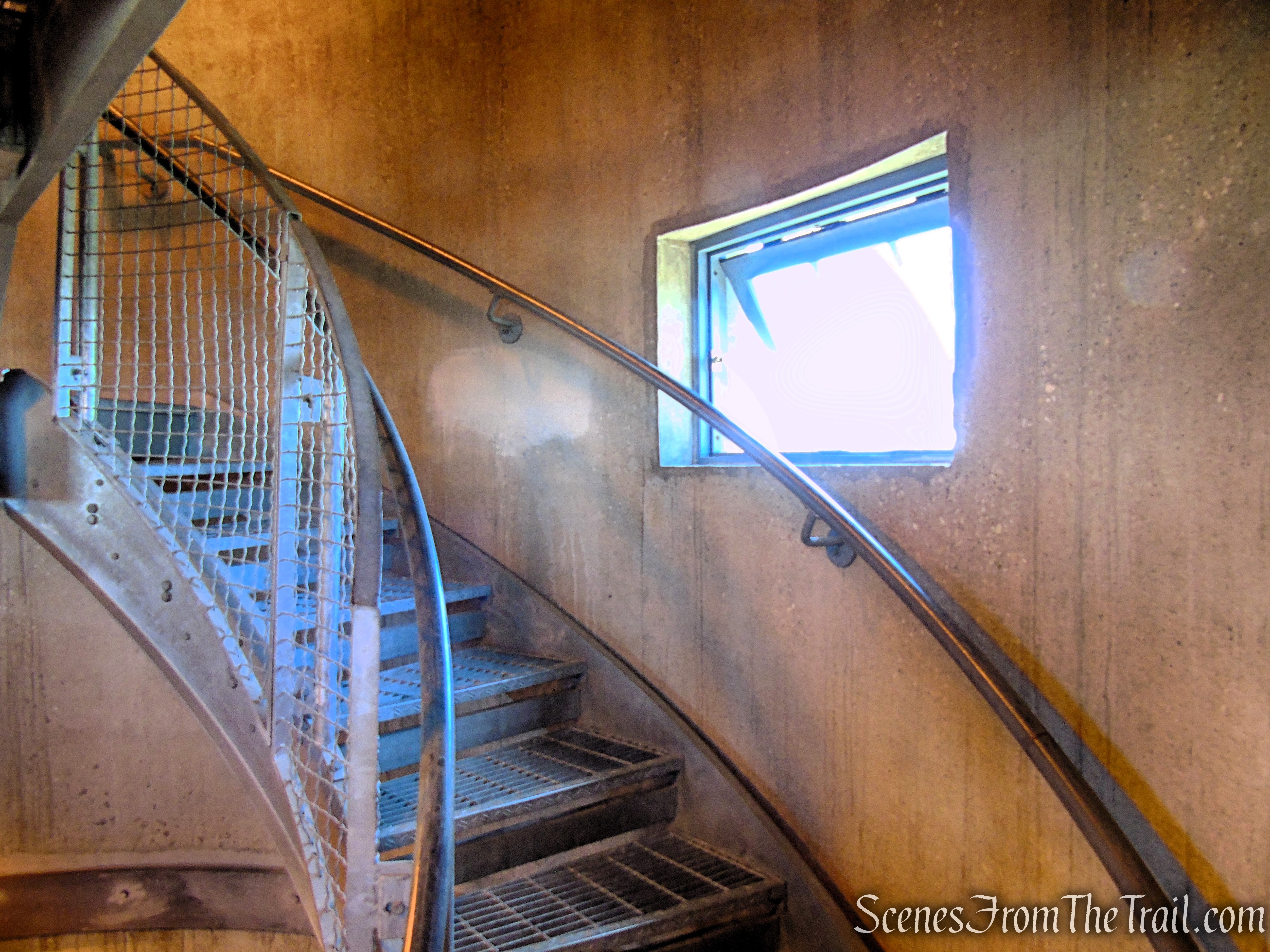
World War II Lookout Tower
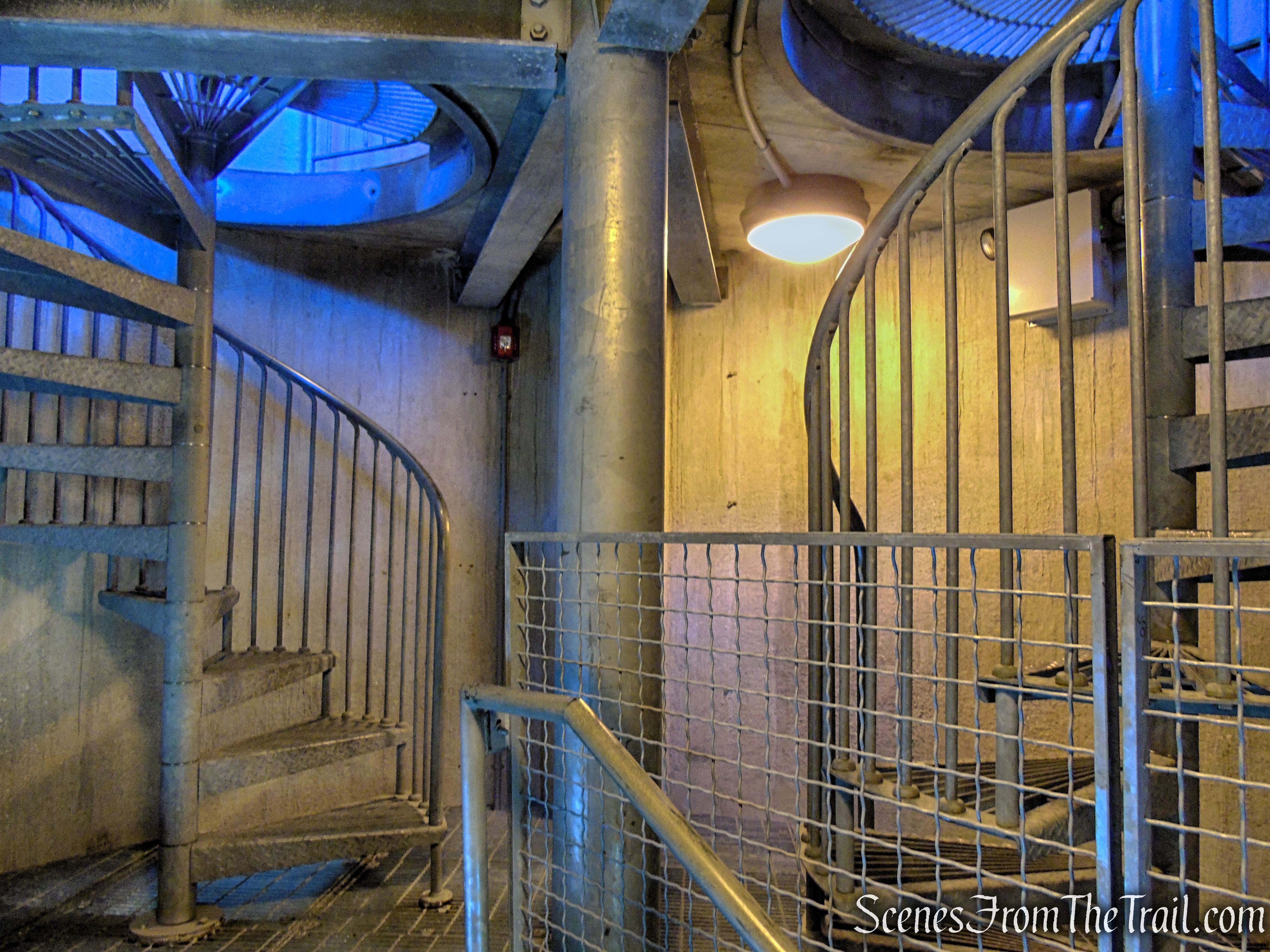
World War II Lookout Tower
An interpreter at the top will explain the equipment used and the role of those who manned the Tower during the war.

World War II Lookout Tower
Looking west towards Sunset Beach and the Atlantic Ocean.
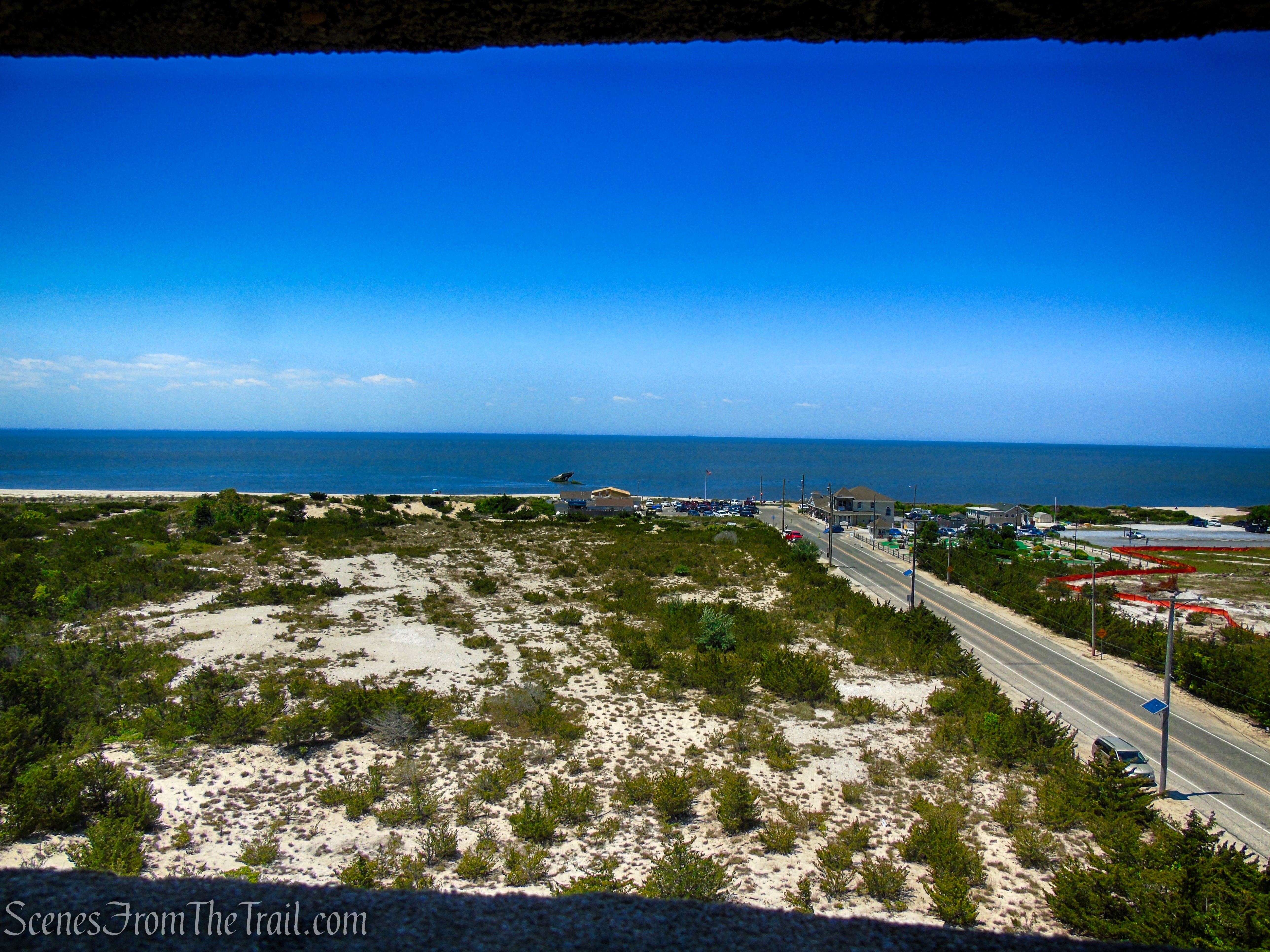
World War II Lookout Tower
Across the road from the Tower is where the Northwest Magnesite Company once stood. The plant operated 24-7 during WW II making firebricks necessary for the production of steel.

World War II Lookout Tower
To the west are the remains of an experimental concrete ship, the SS Atlantus. One of twelve built during World War I due to the scarcity of steel during the war. Proven impractical after several Trans-Atlantic trips because of its weight. The Atlantus was used to transport American troops back home from Europe and also to transport coal in New England. On June 8, 1926 a storm hit and the ship broke free of her moorings and ran aground 150 feet off the coast of Sunset Beach. Several attempts were made to free the ship, but none were successful.

SS Atlantus
SS Atlantus the day she ran aground, June 8, 1926
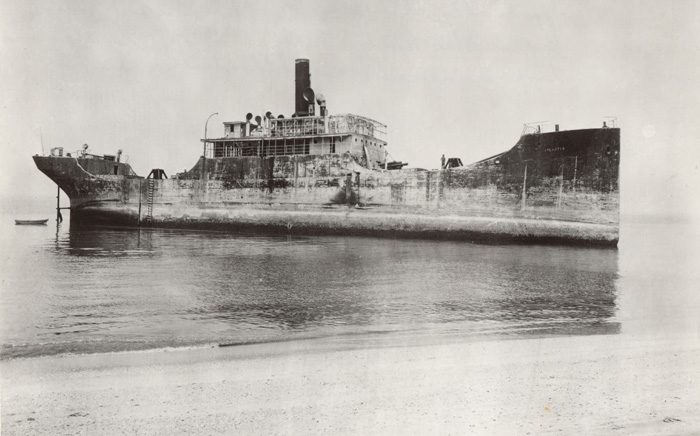
SS Atlantus the day she ran aground, June 8, 1926
Below is a postcard of the SS Atlantus after it ran aground in in 1926.

SS Atlantus
The Cape May Lighthouse as viewed from the spotting gallery, just south of the tower.
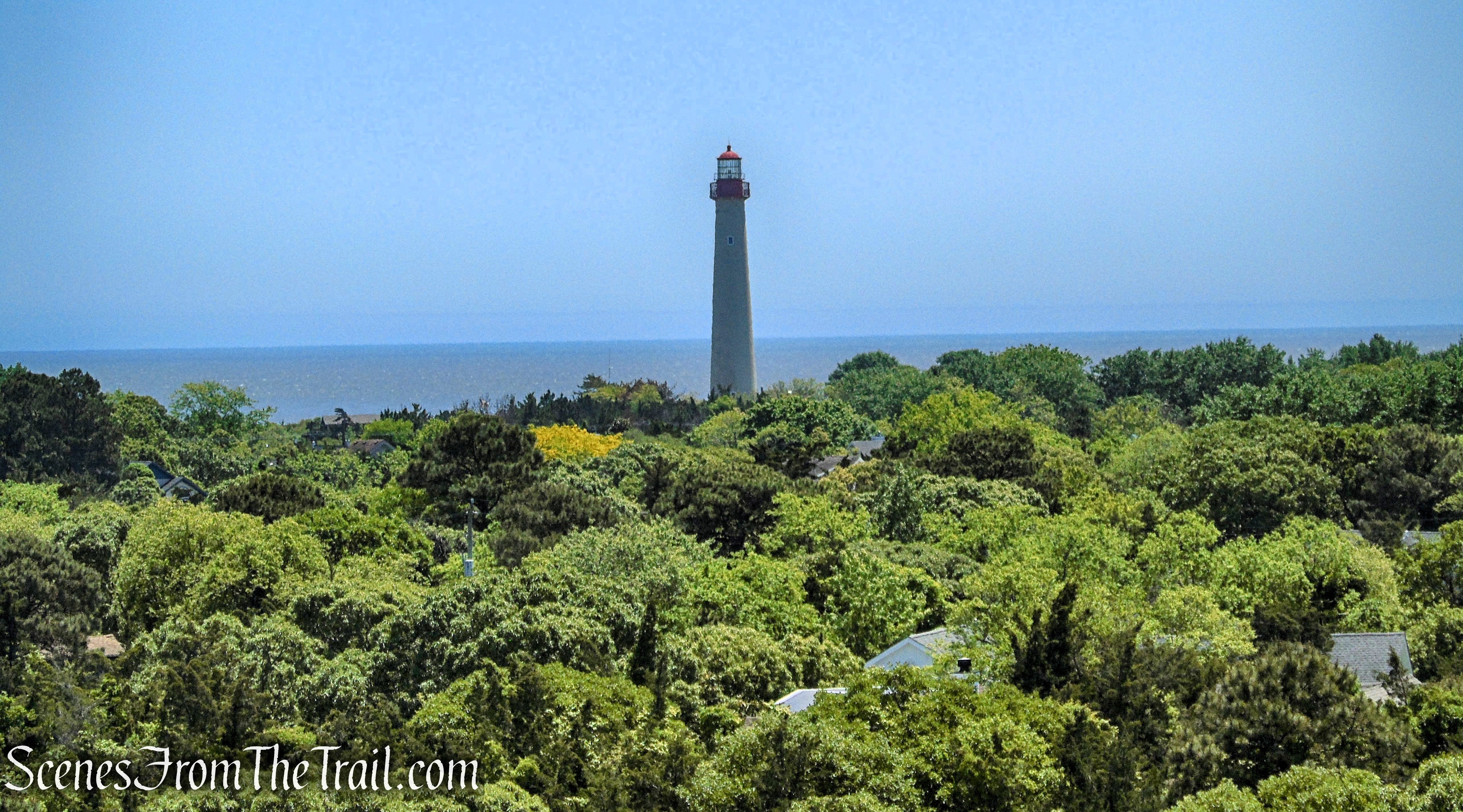
Cape May Lighthouse
At the rear of the Tower is the All Veterans Memorial, an “eternal flame” monument with benches in a contemplative setting.

Eternal Flame sculpture – Fire Control Tower No. 23
When you are done checking out the tower, you may want to take a short ride to Cape May Point State Park (a 4 minute drive) and take a walk out on the beach to see Battery 223. Fire Control Tower No. 23 and Battery 223 worked in tandem as part of New Jersey’s coastal defense.
From 1940-1945, Cape May was bustling with military activity. The Army, Navy and Coast Guard were all stationed here. The Navy had been here since World War I, when it established its air base. The rest of the military presence was newly established for the upcoming war. Due to the lack of existing infrastructure, as well as the immediate need for services for the troops, several Cape May hotels were called into service as barracks and hospitals. The Admiral, Cape May’s largest beachfront hotel, was used to house naval officers and their families. Even private homes were used by the military, as accommodations were tight, especially in the winter; only a limited number of houses had heat. Some
residents opened up their houses to share. Others provided individual rooms to the military and the civilian staff.
Battery 223:
Constructed in the fall of 1942 and completed in June 1943 as part of the Harbor Defenses of the Delaware, Battery 223 is made of thick reinforced concrete with a substantial blast proof roof. Although originally covered with earth, today it is fully exposed and set upon wood pilings, an incongruous man-made object within the natural setting of the beach. Its floor plan has twenty rooms including several shell rooms, a plotting room, a switchboard room, a latrine and a chemical warfare room among other features.
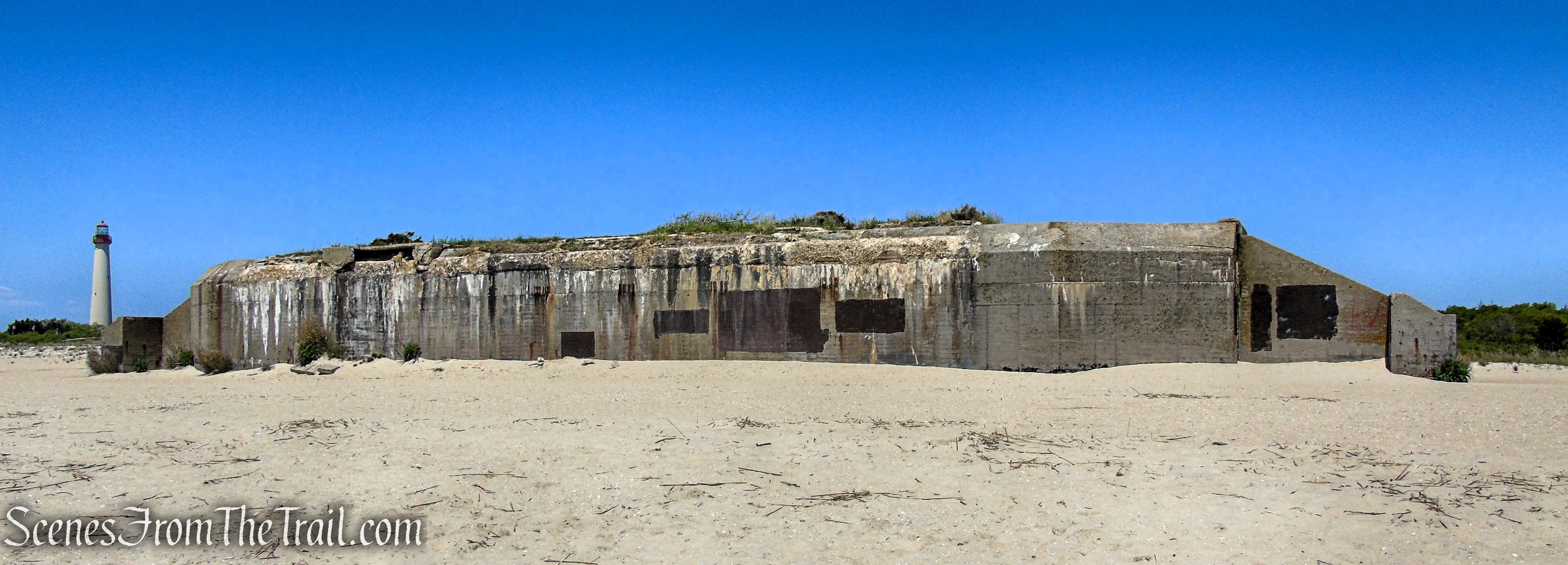
Battery 223 – Cape May Point State Park
Today, Battery 223 is located on the beach within Cape May Point State Park. When it was first constructed, it was located 900 feet from the shore; by the 1970s, however, its pilings were underwater due to beach erosion that is severe at this location. In 2005, to stave off the erosion, the Army Corps of Engineers began a beach replenishment project that brought 1.4 million cubic yards of sand to the Cape May beaches. This project set Battery 223 back from the shoreline, re-establishing it in the sand as it was originally constructed.

Battery 223 – Cape May Point State Park
The 6-inch guns on Battery 223 could hit targets that were nine miles out. This system depended on mathematical triangulation through coordinates provided by base-end stations, often referred to as fire control towers, which were sent on to aim the guns. From the towers, coastal artillery soldiers scanned the horizon for enemy activity.

Battery 223 – Cape May Point State Park
There were four towers in New Jersey which served Battery 223 after it was completed. Fire Control Tower No. 23, the closest to the battery, provided range finding for Battery 223 only. It had two azimuth instruments and exclusively served this battery.
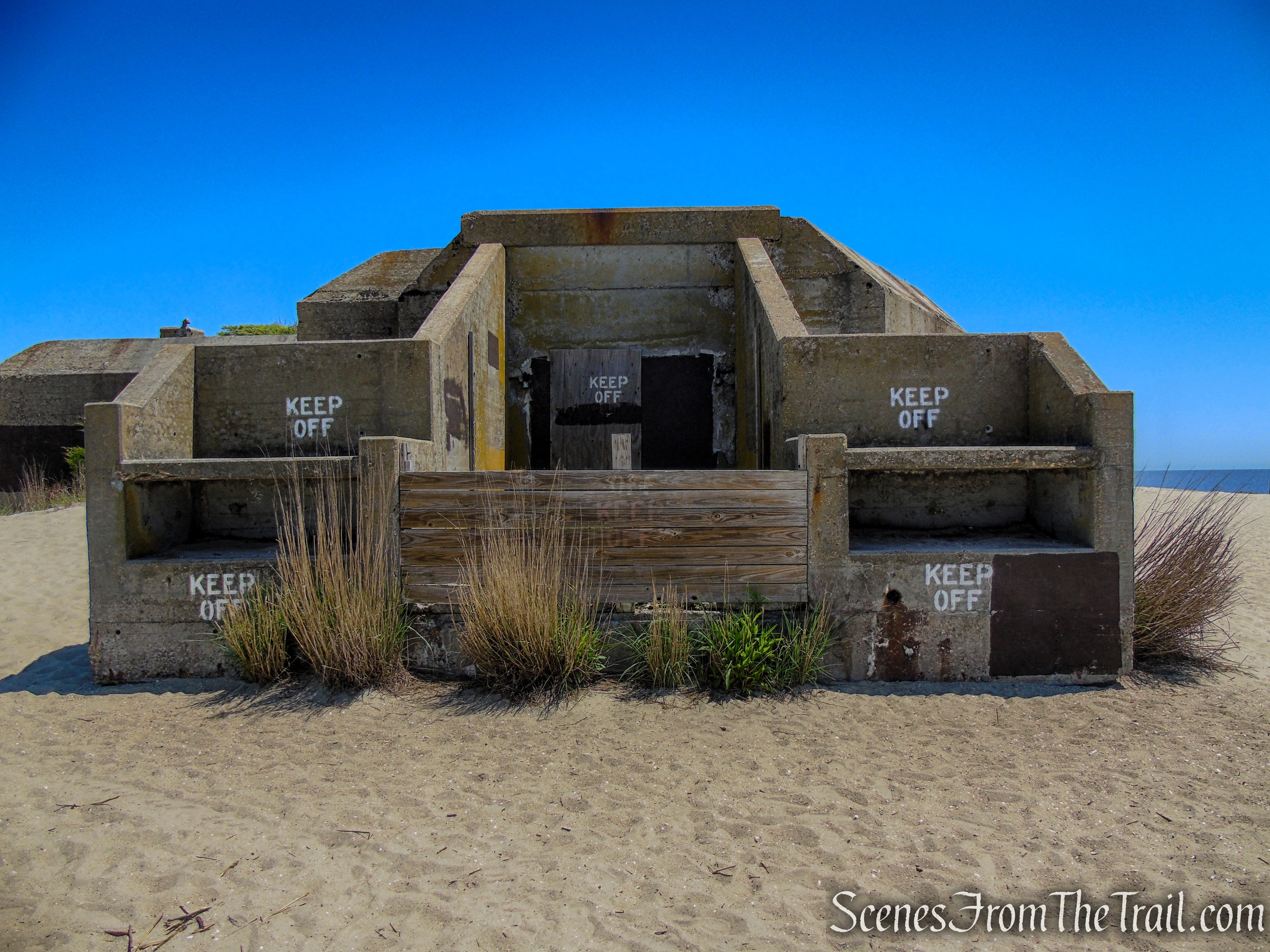
Battery 223 – Cape May Point State Park
Battery 223 was decommissioned in 1944. The Navy took over the Army facilities in 1953. Although no paperwork has been uncovered about the Navy’s ownership of the battery specifically, records about Fire Control No. 23 confirm that the Navy took over all the Army resources at Cape May Point.

Battery 223 – Cape May Point State Park
Under the Navy tenure, there was a Quonset hut on top of Battery 223; it was used for radio communications. A concrete pad was poured on the roof to accommodate this structure; remnants of the pad remain today.
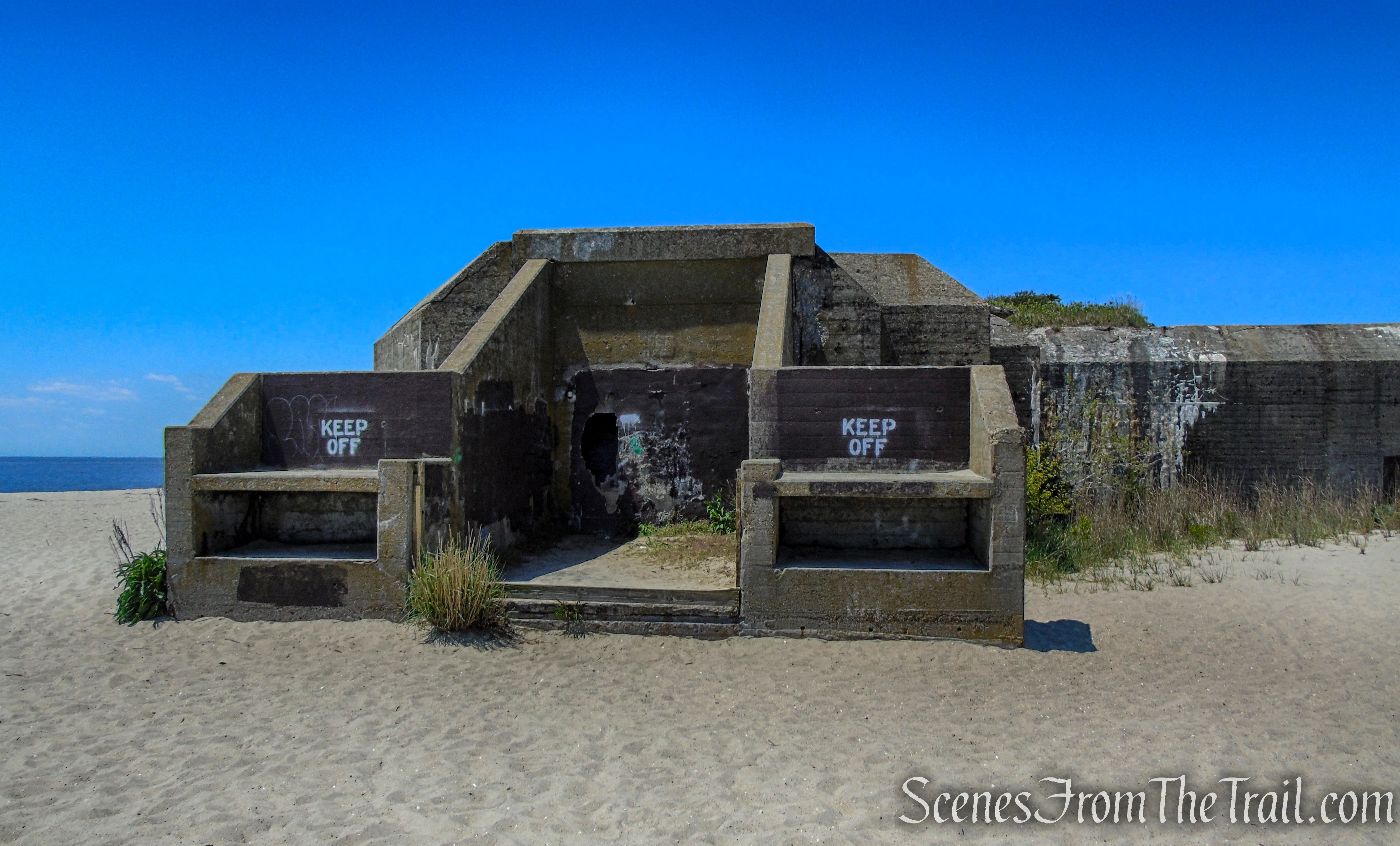
Battery 223 – Cape May Point State Park
Most of the batteries, fire control towers, barracks and auxiliary support buildings that were erected on both coasts between 1940-1945 have been lost. The World War II system that remains is rarely interpreted; it survives because it was forgotten, not because it was valued.

Battery 223 – Cape May Point State Park
The military lands, including Battery 223, became Cape May Point State Park in 1962.

Battery 223 – Cape May Point State Park
Sources:
- World War II Lookout Tower tells Cape May area’s coastal defense story
- World War II Lookout Tower
- Cape May Point Lighthouse Historic Site Overview
- Cape May Point State Park Overview
- Beneath the Surface: The story of the SS Atlantus
- Battery 223 – National Register of Historic Places Registration Form (PDF)